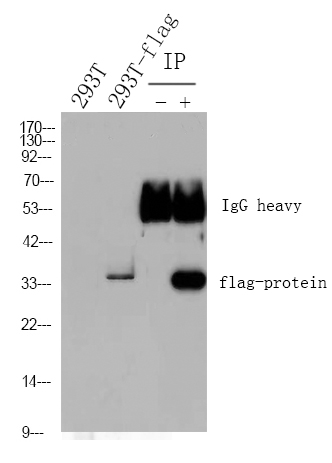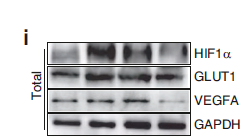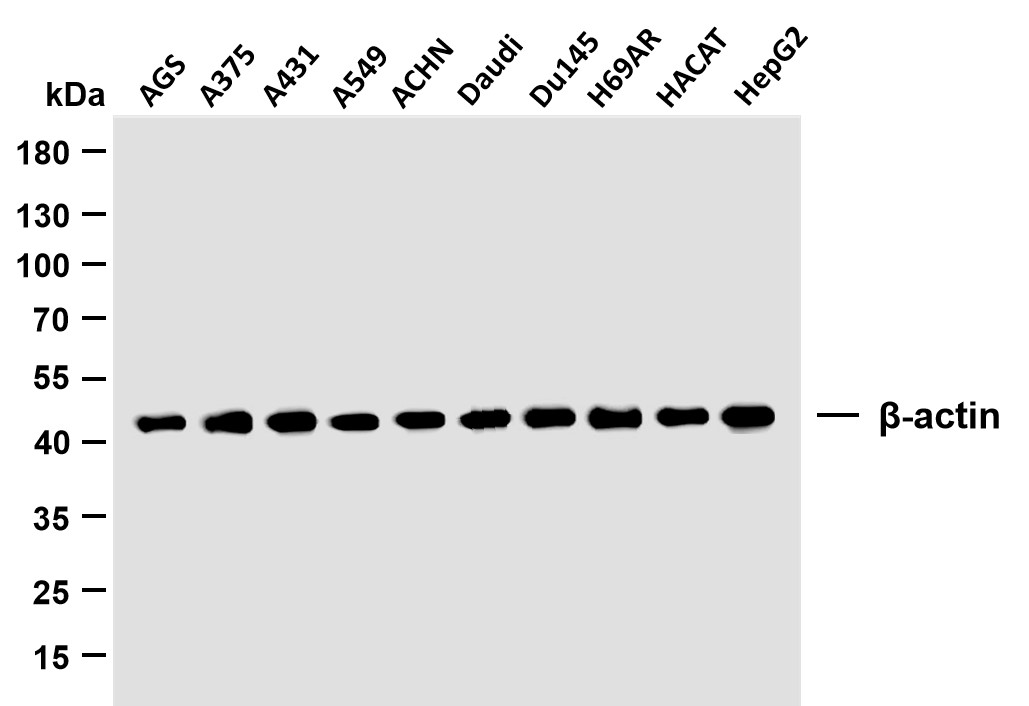
主要信息
Target
CAC1F
Host Species
Rabbit
Reactivity
Human
Applications
WB, Flow Cyt
MW
217kD (Observed)
Conjugate/Modification
Unmodified
货号: YM8594
规格
价格
货期
数量
200μL
¥3,780.00
现货
0
100μL
¥2,300.00
现货
0
40μL
¥960.00
现货
0
加入购物车


已收藏


收藏
详细信息
推荐稀释比
WB 1:1000-5000; FC 1:100-300
组成
PBS, 50% glycerol, 0.05% Proclin 300, 0.05%BSA
特异性
Endogenous
纯化工艺
Protein A
储存
-15°C to -25°C/1 year(Do not lower than -25°C)
实测条带
217kD
修饰
Unmodified
克隆性
Monoclonal
克隆号
PT0769R
同种型
IgG,Kappa
相关产品
抗原&靶点信息
特异性:
Endogenous
展开内容
基因名称:
CACNA1F;CACNAF1
展开内容
蛋白名称:
Voltage-dependent L-type calcium channel subunit alpha-1F;Voltage-gated calcium channel subunit alpha Cav1.4;
展开内容
别名:
CACNA1F ;
CACNAF1 ;
Voltage-dependent L-type calcium channel subunit alpha-1F ;
Voltage-gated calcium channel subunit alpha Cav1.4 ;
CACNAF1 ;
Voltage-dependent L-type calcium channel subunit alpha-1F ;
Voltage-gated calcium channel subunit alpha Cav1.4 ;
展开内容
背景:
calcium voltage-gated channel subunit alpha1 F(CACNA1F) Homo sapiens This gene encodes a multipass transmembrane protein that functions as an alpha-1 subunit of the voltage-dependent calcium channel, which mediates the influx of calcium ions into the cell. The encoded protein forms a complex of alpha-1, alpha-2/delta, beta, and gamma subunits in a 1:1:1:1 ratio. Mutations in this gene can cause X-linked eye disorders, including congenital stationary night blindness type 2A, cone-rod dystropy, and Aland Island eye disease. Alternatively spliced transcript variants encoding multiple isoforms have been observed. [provided by RefSeq, Aug 2013],
展开内容
功能:
[Isoform 1]: Voltage-sensitive calcium channels (VSCC) mediate the entry of calcium ions into excitable cells and are also involved in a variety of calcium-dependent processes, including muscle contraction, hormone or neurotransmitter release, gene expression, cell motility, cell division and cell death. The isoform alpha-1F gives rise to L-type calcium currents. Long-lasting (L-type) calcium channels belong to the 'high-voltage activated' (HVA) group. They are blocked by dihydropyridines (DHP), phenylalkylamines, and by benzothiazepines. Activates at more negative voltages and does not undergo calcium-dependent inactivation (CDI), due to incoming calcium ions, during depolarization. {ECO:0000269|PubMed:15897456, ECO:0000269|PubMed:27226626}.; [Isoform 4]: Voltage-dependent L-type calcium channel activates at more hyperpolarized voltages and exhibits a robust calcium-dependent inactivation (CDI), due to incoming calcium ions, during depolarizations. {ECO:0000269|PubMed:27226626}.; [Isoform 5]: Voltage-sensitive calcium channels (VSCC) mediate the entry of calcium ions into excitable cells and are also involved in a variety of calcium-dependent processes, including muscle contraction, hormone or neurotransmitter release, gene expression, cell motility, cell division and cell death. {ECO:0000269|PubMed:27226626}.; [Isoform 6]: Voltage-dependent L-type calcium channel activates at more hyperpolarized voltages and exhibits a robust calcium-dependent inactivation (CDI), due to incoming calcium ions, during depolarizations. {ECO:0000269|PubMed:27226626}.
展开内容
细胞定位:
Membrane; Multi-pass membrane protein.
展开内容
组织表达:
Expression in skeletal muscle and retina (PubMed:10873387). Isoform 4 is expressed in retina (PubMed:27226626). {ECO:0000269|PubMed:10873387, ECO:0000269|PubMed:27226626}.
展开内容
研究领域:
>>MAPK signaling pathway ;
>>Calcium signaling pathway ;
>>cGMP-PKG signaling pathway ;
>>cAMP signaling pathway ;
>>Cardiac muscle contraction ;
>>Adrenergic signaling in cardiomyocytes ;
>>Vascular smooth muscle contraction ;
>>Retrograde endocannabinoid signaling ;
>>Cholinergic synapse ;
>>Serotonergic synapse ;
>>GABAergic synapse ;
>>Insulin secretion ;
>>GnRH signaling pathway ;
>>Oxytocin signaling pathway ;
>>Renin secretion ;
>>Aldosterone synthesis and secretion ;
>>Cortisol synthesis and secretion ;
>>GnRH secretion ;
>>Cushing syndrome ;
>>Growth hormone synthesis, secretion and action ;
>>Alzheimer disease ;
>>Prion disease ;
>>Pathways of neurodegeneration - multiple diseases ;
>>Chemical carcinogenesis - receptor activation ;
>>Hypertrophic cardiomyopathy ;
>>Arrhythmogenic right ventricular cardiomyopathy ;
>>Dilated cardiomyopathy
>>Calcium signaling pathway ;
>>cGMP-PKG signaling pathway ;
>>cAMP signaling pathway ;
>>Cardiac muscle contraction ;
>>Adrenergic signaling in cardiomyocytes ;
>>Vascular smooth muscle contraction ;
>>Retrograde endocannabinoid signaling ;
>>Cholinergic synapse ;
>>Serotonergic synapse ;
>>GABAergic synapse ;
>>Insulin secretion ;
>>GnRH signaling pathway ;
>>Oxytocin signaling pathway ;
>>Renin secretion ;
>>Aldosterone synthesis and secretion ;
>>Cortisol synthesis and secretion ;
>>GnRH secretion ;
>>Cushing syndrome ;
>>Growth hormone synthesis, secretion and action ;
>>Alzheimer disease ;
>>Prion disease ;
>>Pathways of neurodegeneration - multiple diseases ;
>>Chemical carcinogenesis - receptor activation ;
>>Hypertrophic cardiomyopathy ;
>>Arrhythmogenic right ventricular cardiomyopathy ;
>>Dilated cardiomyopathy
展开内容
信号通路
Organismal Systems >> Endocrine system >> Insulin secretion
Organismal Systems >> Endocrine system >> GnRH signaling pathway
Organismal Systems >> Endocrine system >> Oxytocin signaling pathway
Organismal Systems >> Endocrine system >> Growth hormone synthesis, secretion and action
Organismal Systems >> Endocrine system >> Aldosterone synthesis and secretion
Organismal Systems >> Circulatory system >> Cardiac muscle contraction
Organismal Systems >> Circulatory system >> Adrenergic signaling in cardiomyocytes
Organismal Systems >> Circulatory system >> Vascular smooth muscle contraction
Organismal Systems >> Nervous system >> Cholinergic synapse
Human Diseases >> Neurodegenerative disease >> Alzheimer disease
Human Diseases >> Neurodegenerative disease >> Prion disease
Human Diseases >> Neurodegenerative disease >> Pathways of neurodegeneration - multiple diseases
Environmental Information Processing >> Signal transduction >> MAPK signaling pathway
Environmental Information Processing >> Signal transduction >> Calcium signaling pathway
Environmental Information Processing >> Signal transduction >> cAMP signaling pathway
Environmental Information Processing >> Signal transduction >> cGMP-PKG signaling pathway
文献引用({{totalcount}})
货号: YM8594
规格
价格
货期
数量
200μL
¥3,780.00
现货
0
100μL
¥2,300.00
现货
0
40μL
¥960.00
现货
0
加入购物车


已收藏


收藏
Recently Viewed Products
Clear allToggle night Mode
{{pinfoXq.title || ''}}
Catalog: {{pinfoXq.catalog || ''}}
Filter:
All
{{item.name}}
{{pinfo.title}}
-{{pinfo.catalog}}
主要信息
Target
{{pinfo.target}}
Reactivity
{{pinfo.react}}
Applications
{{pinfo.applicat}}
Conjugate/Modification
{{pinfo.coupling}}/{{pinfo.modific}}
MW (kDa)
{{pinfo.mwcalc}}
Host Species
{{pinfo.hostspec}}
Isotype
{{pinfo.isotype}}
产品 {{index}}/{{pcount}}
上一个产品
下一个产品
{{pvTitle}}
滚轮缩放图片
{{pvDescr}}





















